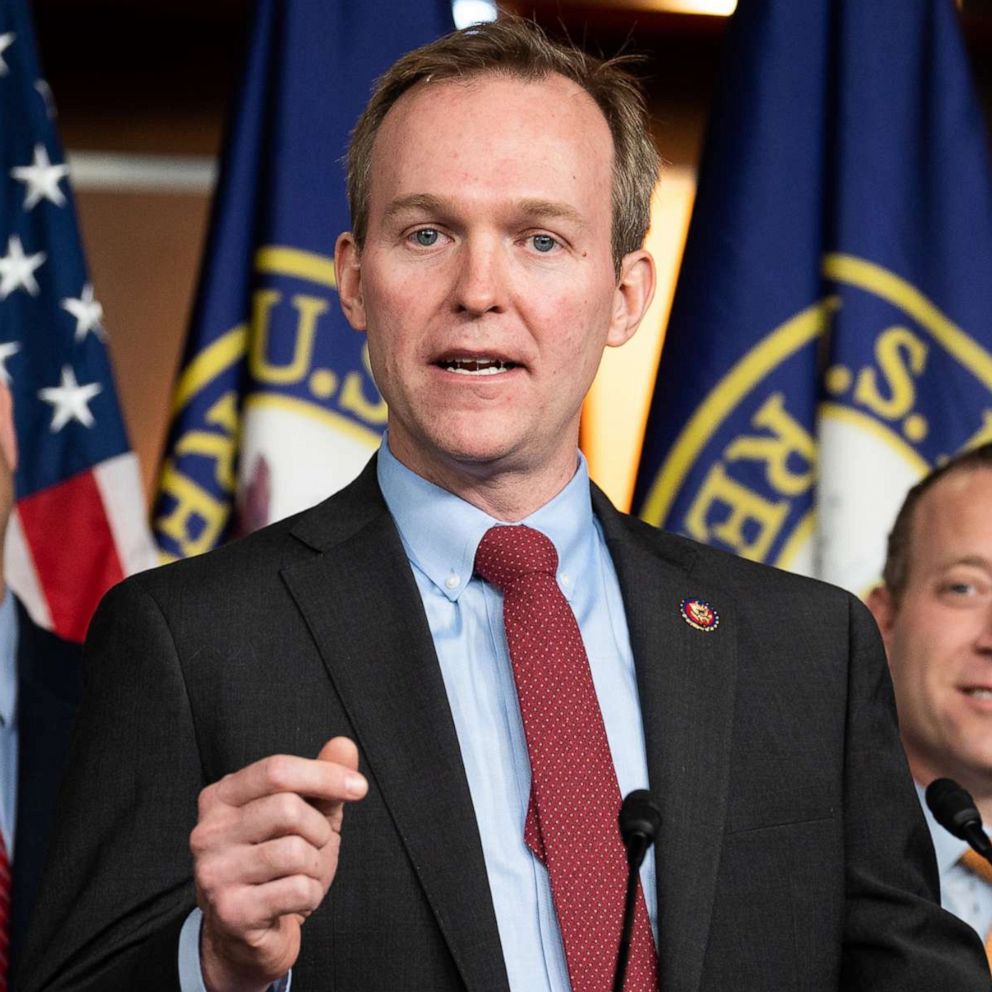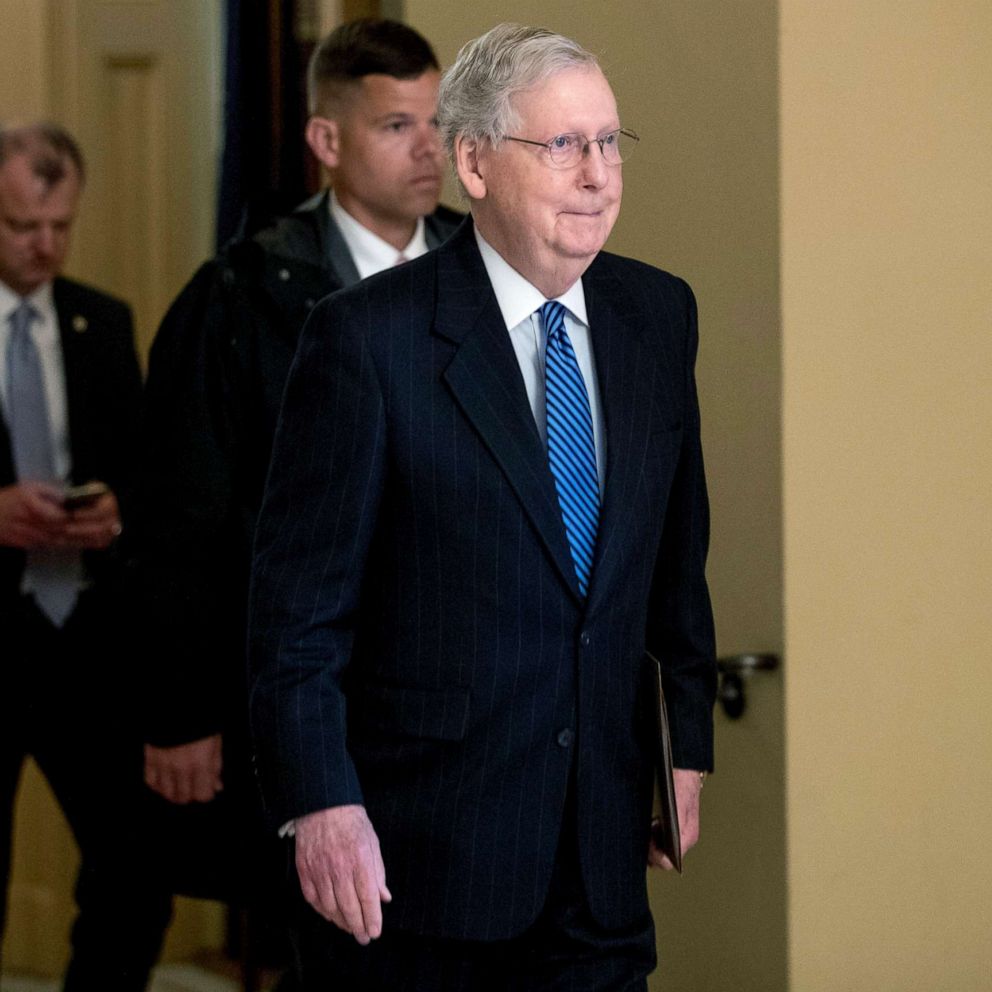House Democrats mull changing rules to allow proxy voting amid coronavirus pandemic

In a new report, House Rules Chairman Jim McGovern proposes a solution to concerns members of Congress have about physical attendance being required to vote in the House of Representatives: proxy voting.
While there have been bipartisan calls in recent weeks for Congress to adopt remote voting, Democrats view proxy voting as the best option for members -- arguing there is precedent at the committee level in the House and Senate.
Tune into ABC at 1 p.m. ET and ABC News Live at 4 p.m. ET every weekday for special coverage of the novel coronavirus with the full ABC News team, including the latest news, context and analysis.
In a Dear Colleague letter posted online late Monday night, McGovern stressed that the best option would be proceeding under current rules with unanimous consent or voice votes.
"Clearly, the quickest and likely best path forward is for Congress to pass that measure by unanimous consent or by voice vote," he notes. "Short of that, there are a few difficult options that we can consider utilizing as outlined in the enclosed report."
In that report, the Rules Committee proposes changing House rules to permit proxy voting on the House floor.
"If universal agreement is not reached, a time-limited change like enhanced unanimous consent or proxy voting could be adopted to help the House function," McGovern’s report suggests. "There is currently no perfect solution to allow absent Members to vote on the floor. However, proxy voting is likely the best of the options available under the circumstances."
Changing the House rules
Proxy voting would also require a rules change -- and almost certainly GOP buy-in. Without Republican consent, members would still have to return to vote on a rules change in the House chamber.
McGovern’s report also warns against the problems caused by remote voting. With remote voting, the primary consideration members worry about is the Constitution, which makes specific references to the Congress meeting in person, with members required for attendance and language about dragging absent members into the chamber to constitute a quorum. It’s clear the framers had a vision that supports physical attendance and there’s no evidence they ever contemplated anything like remote voting at the dawn of the republic.
"Remote voting -- in addition to facing logistical and security challenges -- is untested constitutionally and there is no precedent for its use in Congress. Using this process to pass legislation could run the risk of legislation being challenged in court, for example by an outside group opposing the legislation," the report states.
The report also suggests the House could implement proxy voting, in which an absent member gives a present member their proxy to cast an actual vote for them, for a prescribed period of time, pointing at legislatures in Oklahoma and Pennsylvania that are implementing proxy voting for the duration of the COVID-19 pandemic.
McGovern is a veteran of Congress -- serving as a representative since 1997 and as a congressional aide since 1981. Given the rapid turnover in Congress, where about 20-25% of the body changes every two years, there actually aren’t many members who were present during a debate around remote voting in the aftermath of the 9/11 terrorist attacks. Now there are added obstacles, such as hacking and cyber intrusions that create additional questions about the integrity and security of remote voting.
During the ongoing pandemic, the Departments of Homeland Security and Health and Human Services are facing challenges from hackers -- and the fear is that opening the legislative branch to remote roll call votes would create another vulnerability.
McGovern believes proxy voting precedent in committees clears the way to allow it on the House floor and eliminates the vulnerability created by remote voting.
"But in the House it could raise some of the same constitutional questions as remote voting -- namely, whether a Member must be physically present in the chamber to vote," the report concedes. "However, many scholars argue that the House has the right to determine its own rules, and that the courts would be unlikely to question the process the House used to pass a bill, if the House determined that it was within the bounds of the House rules. And unlike remote voting, proxy voting has a basis in parliamentary tradition and is not accompanied by the same security and technology concerns."
Democrats are holding a caucus conference call at 2 p.m. Tuesday, where McGovern will propose either a 30- or 60-day period where the House can vote on legislation related to the COVID-19 response, although the rules change could be renewed if the pandemic drags on longer.
This also still gives members the option of showing up in person to vote if they want to, but allows members to be counted without actually being there.
How would it work?
Any member who does not want to risk personally attending a vote could fill out a form and give it to another a member of Congress to report their vote on legislation for the COVID-19 response. For example, Rep. Katie Porter, one strong proponent of remote voting, could give her written consent to another member to cast her vote by proxy.
This would be a vote that is recorded on the House floor and counted towards or against passage, not simply entered into the congressional record for how they would have voted had they been there, as many members do now when they miss a vote.
One important note -- this has never been done on the House floor before and proxy voting in the House committees has not been done for several session of Congress either.

Democratic leaders have a goal of finding a palatable balance for a system where members who aren’t able to come back because they’re quarantined or don’t want to come back due to worries about their health.
Proposal to change unanimous consent rules
There is also a proposal in the report to change objecting to unanimous consent requests -- ensuring that one member couldn’t object to something the other 434 members of the House would want to do. This change would require a different number -- whether it’s two or five members to object.
"The House could adopt a resolution stating that, for a prescribed period of time, the number of Members required to object to a unanimous consent request is increased to a specific number," the report states. "Advantages: This would prevent a single Member or small cohort of Members from derailing critical legislation that is broadly supported by Members of the House. The House’s current guidelines requiring clearance by both leaderships would likely need to remain in place. Disadvantages: Members who frequently disagree with the majority of the House might object to this change; therefore, it could require a recorded vote to adopt it."
Why remote voting is not practical
A quorum is established by having a majority of the members of the whole House in the chamber. How could that be achieved remotely? Minority rights would be eviscerated. How would a member object to any unanimous consent request or appeal the ruling of the chair, make a motion to recommit or any other number of procedural motions?
There’s more to legislating than casting a yea, nay or present vote. How would floor debate work? Congress is currently scrambling to figure out how to have staff work remotely on laptops. It’s not the most tech savvy institution in Washington. They’re not going to log into a video conference and have 435 video screens up to conduct the business of Congress.
Other adjustments the House could consider
As Majority Leader Steny Hoyer explained during a pen-and-pad briefing with reporters earlier this month, in order to adhere to the Centers for Disease Control and Prevention’s recommendation against meeting in large groups, the House could also keep votes open a little longer and have members come into the chamber in small groups.
This can be done without changing the rules of the House but ensures you don’t have 500 people on the floor all at once. Members could organize by their state, or even on a first-come, first-served basis. Expanding the time of a vote is easy to do and doesn’t require a rules change.
What to know about coronavirus:
- How it started and how to protect yourself: coronavirus explained
- What to do if you have symptoms: coronavirus symptoms
- Tracking the spread in the US and Worldwide: coronavirus map
This report was featured in the Tuesday, March 24, 2020, episode of “Start Here,” ABC News’ daily news podcast.
"Start Here" offers a straightforward look at the day's top stories in 20 minutes. Listen for free every weekday on Apple Podcasts, Google Podcasts, Spotify, the ABC News app or wherever you get your podcasts.







